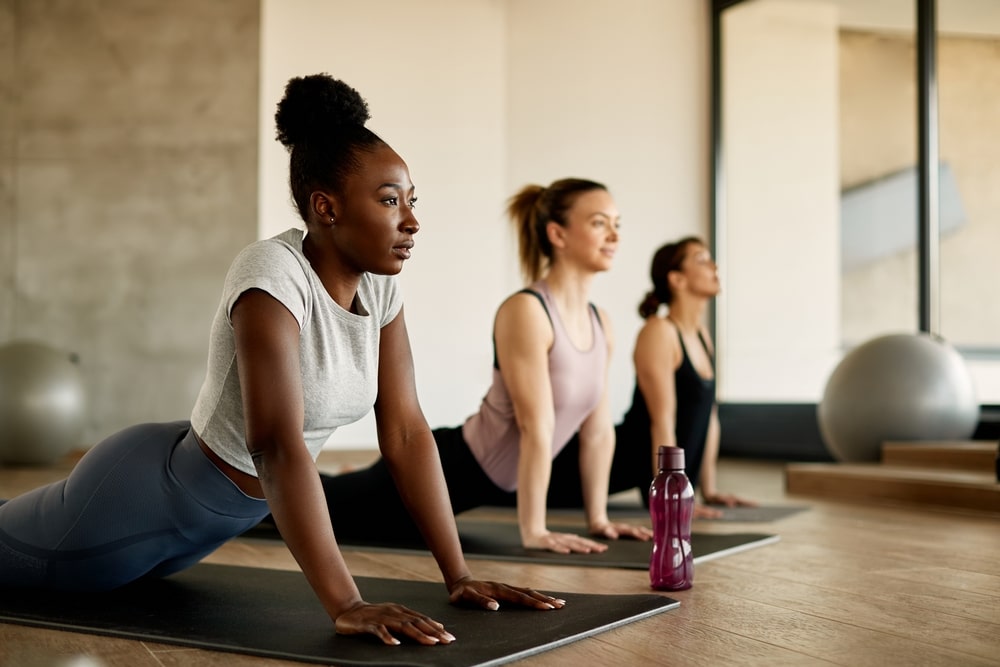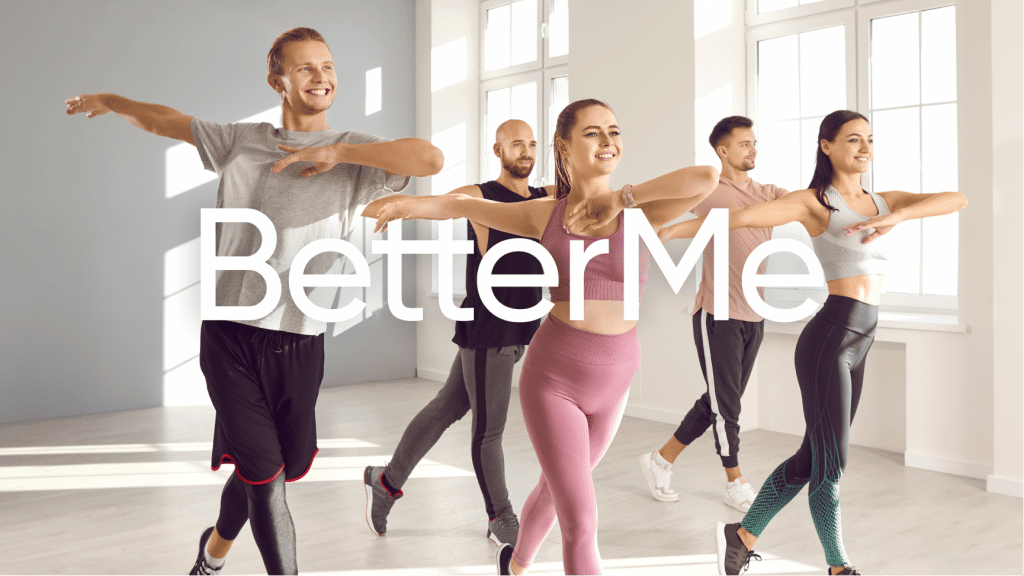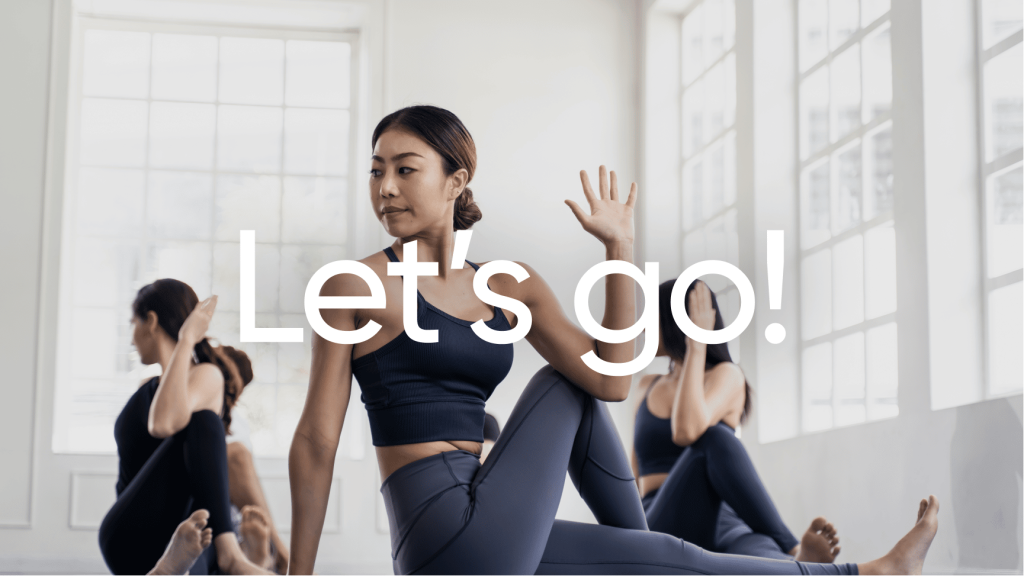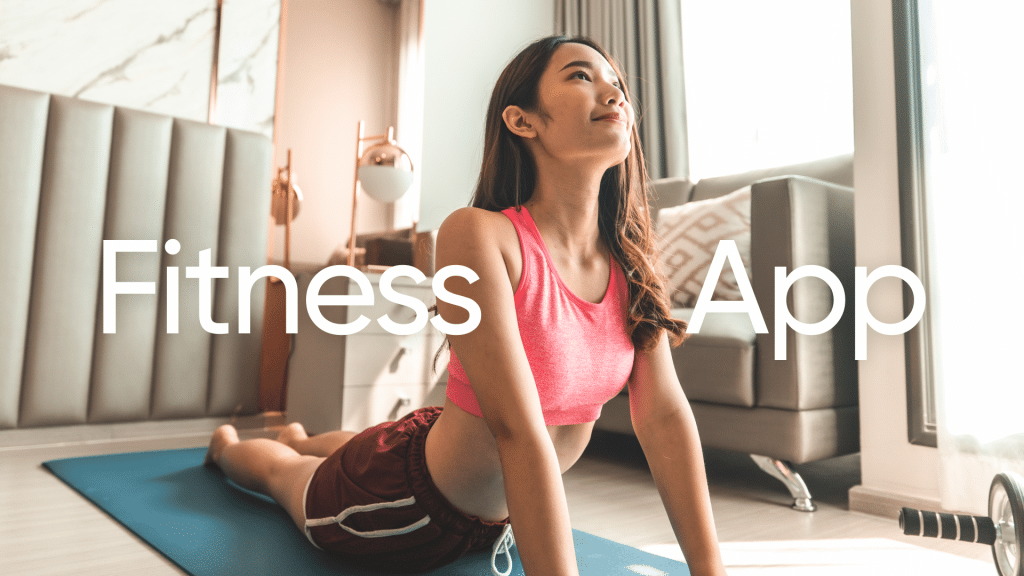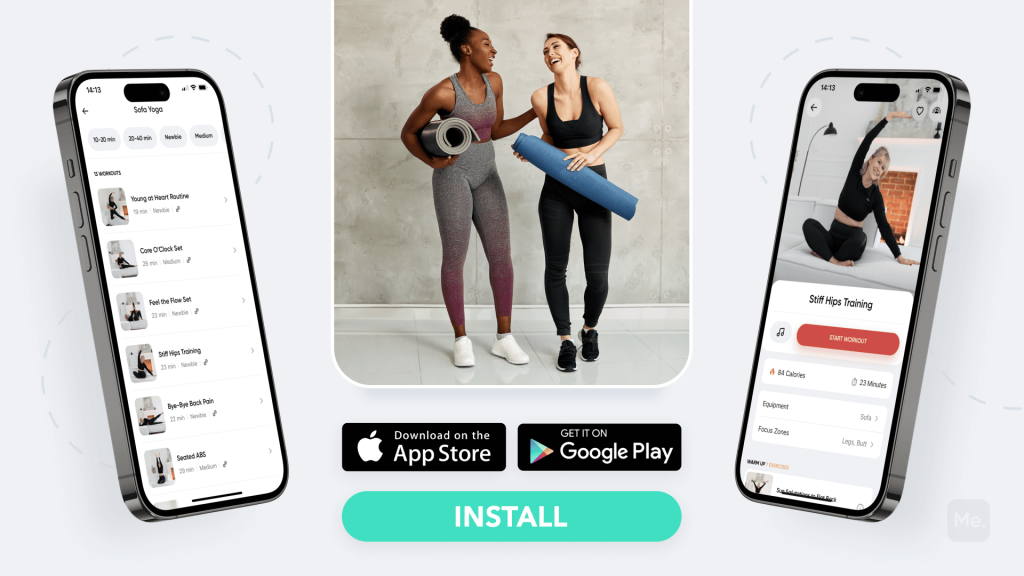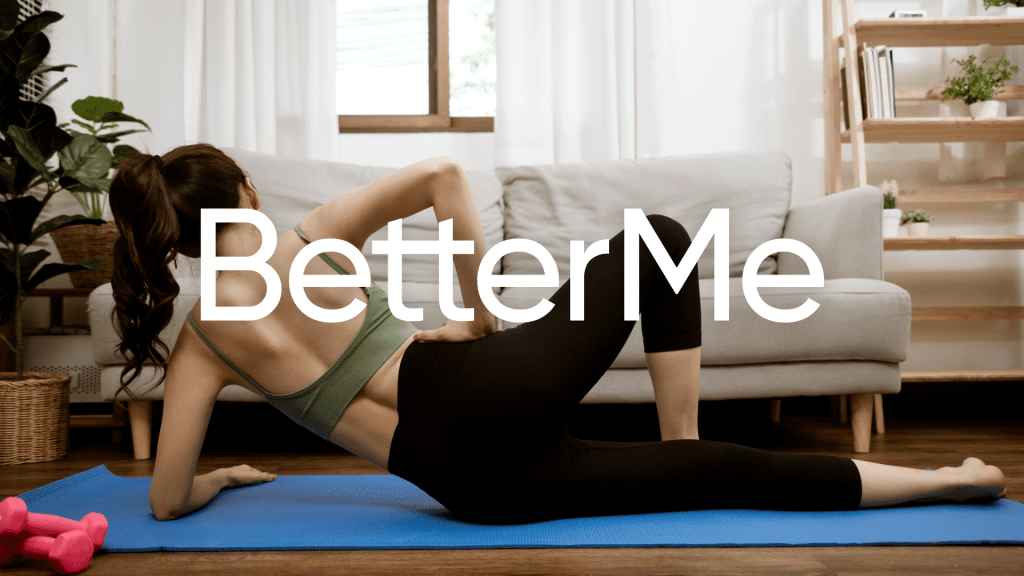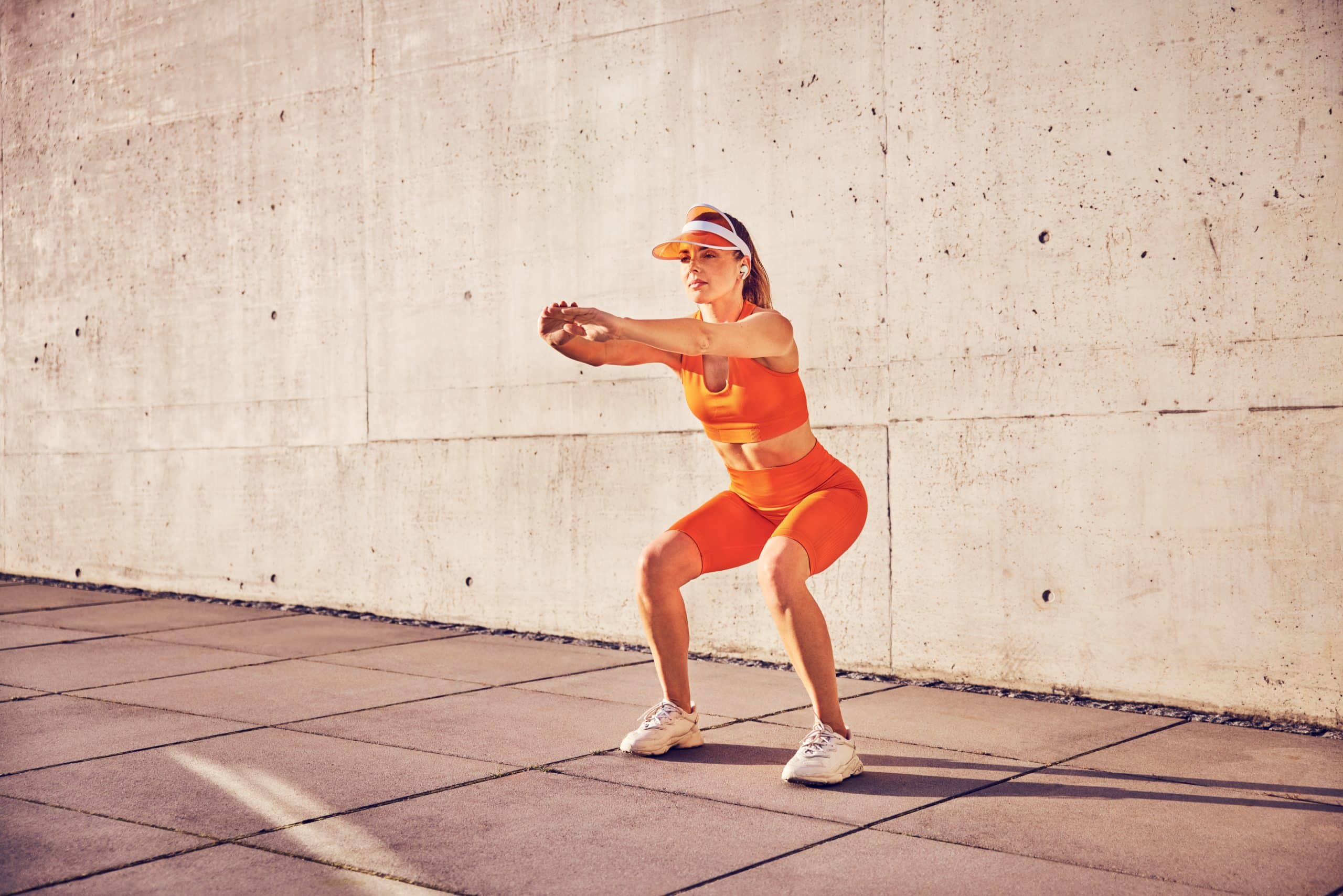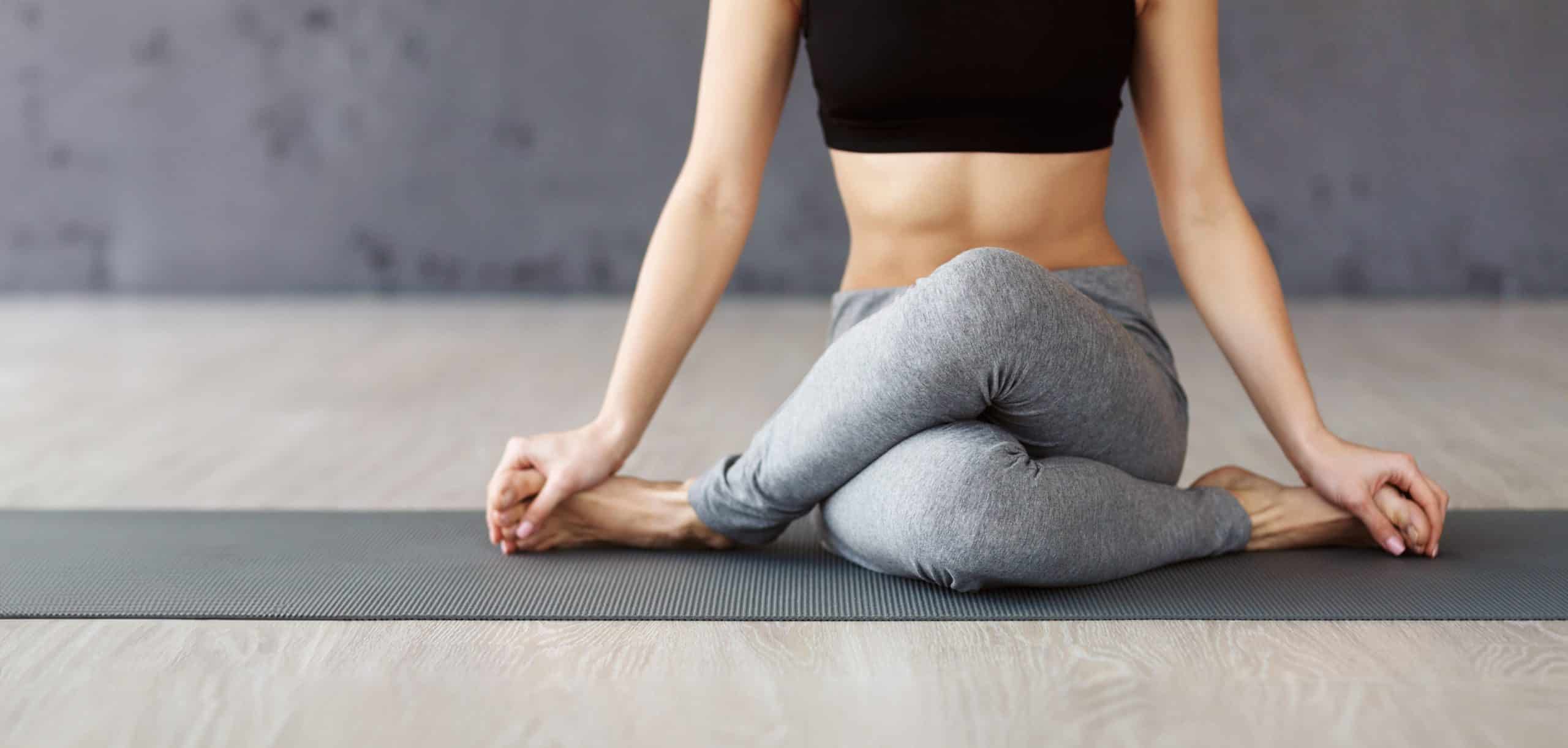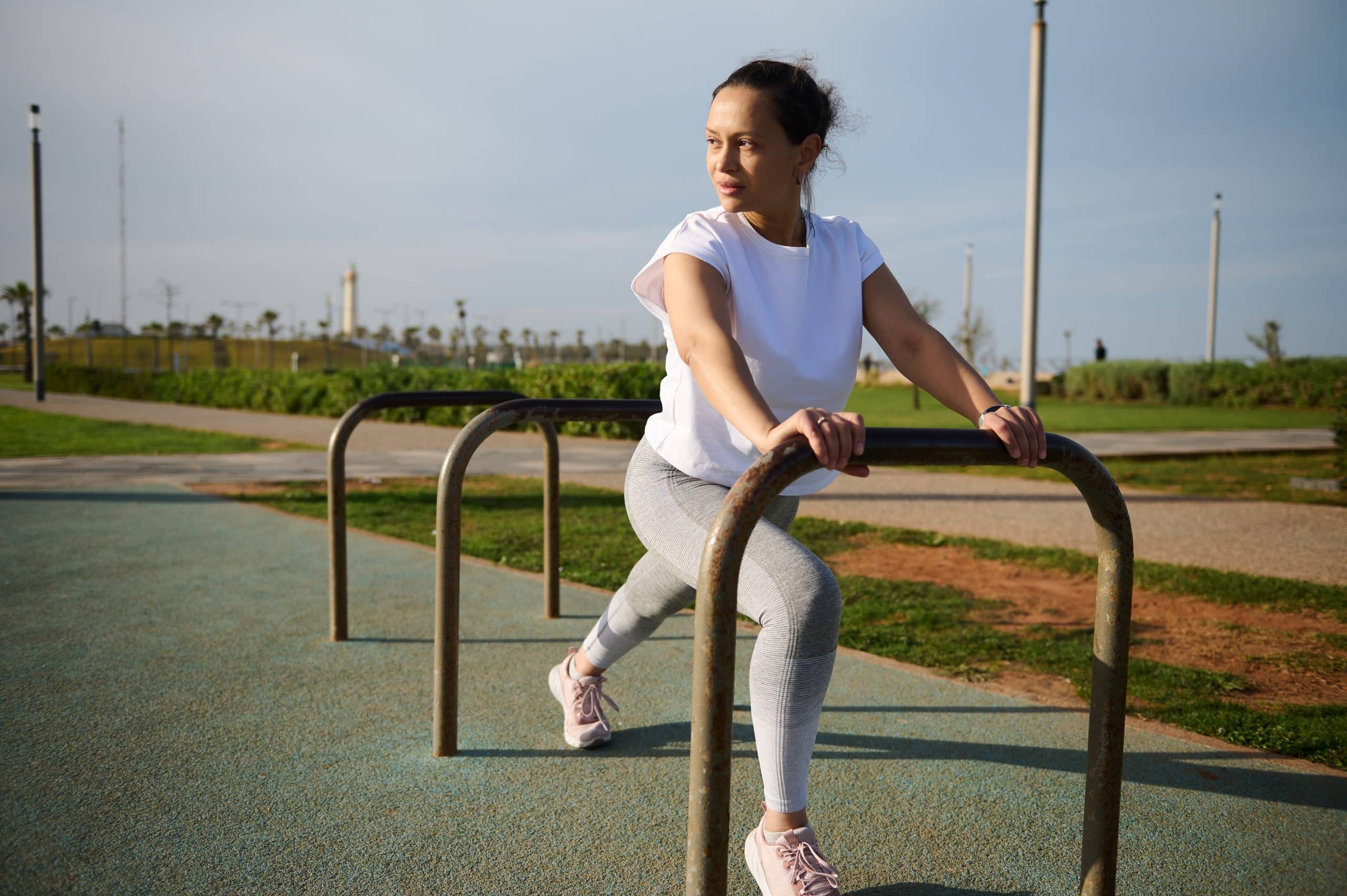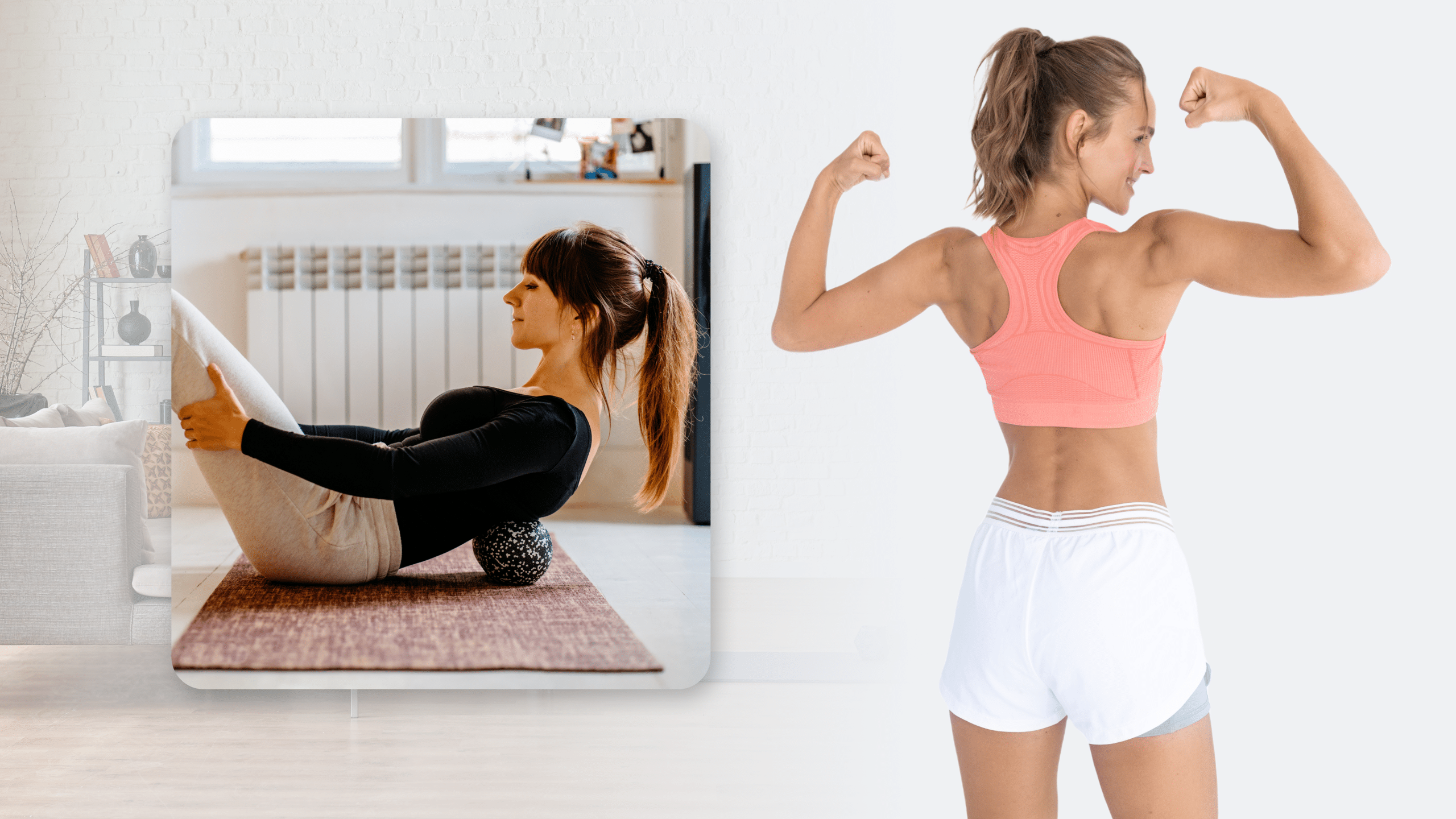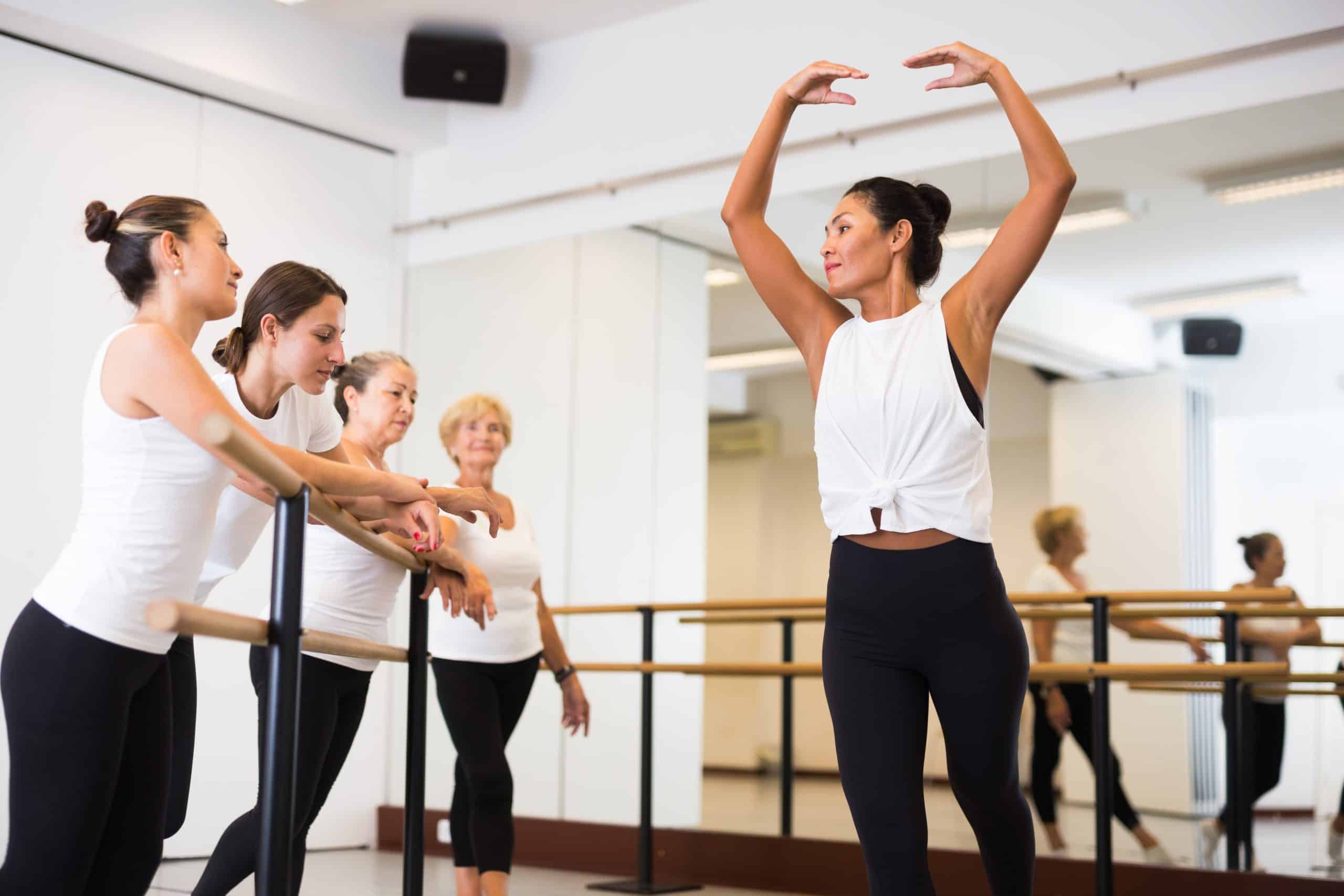Are you unsure about when to stretch during your workout? Does it feel like an afterthought, or something that you’re just supposed to do, but aren’t sure why? You’re not alone! Many people struggle with the decision of whether they should stretch before or after their workouts. Considering the importance of stretching for injury prevention and improved performance, it’s great that you’re thinking about this ahead of time! Fortunately, researchers have looked into this question and answered it for us – stretching both before and after a workout is optimal. They recommend different types of stretching for each scenario which we’ll share all about with you in this article.
Why Is Stretching Important?
First things first, what are the science-backed benefits of stretching?
Improved Performance
Stretching can help improve range of motion, which helps you move more efficiently during activities like running and weightlifting (1).
Injury Prevention
Stretching before exercise can help decrease the risk of strains and sprains that are caused by tight muscles or improper movement patterns (11).
Stress Relief
Stretching after exercise can help decrease the accumulation of lactic acid, which is responsible for that burning sensation you feel in your muscles after a tough workout. It also helps release tension and relaxes both the body and mind.
Soothes Soreness
Gentle stretching after exercise can help reduce muscle soreness by increasing the circulation of blood and oxygen to your muscles.
Improves Posture
Regular stretching can help improve posture by correcting muscle imbalances and restoring the body to its natural alignment (4).
Improves Coordination And Balance
Stretching helps to improve coordination and balance by teaching your body how to move in a controlled and efficient manner (9).
Develops Body Awareness
Regular stretching can help you become more aware of your body and how it moves, which allows for better control during physical activities.
Promotes Circulation
Stretching helps to promote circulation by increasing the flow of blood throughout your body, which can help boost energy levels (8) (10).
Activates Muscles
Stretching can help activate your muscles prior to a workout, which can help you make the most of your training session (1).
Now that you know the benefits of stretching, let’s take a look at when is the best time to do it in relation to your workouts.
Read More: 9 Easy Yet Effective Stretches For Stress Relief That You Can Do At Any Time, Anywhere
Should You Stretch Before Or After Your Workout?
The general consensus among fitness experts is that stretching both before and after a workout is optimal.
Stretching before exercise can help increase flexibility, prepare your muscles for the activity ahead, and reduce the risk of injury. Conversely, stretching after exercise will help you cool down and relax your muscles.
That said, the type of stretching you do should be different for each scenario.
Before a workout, your muscles are “cold” or not warmed up yet. Stretching and holding a stretch for long periods of time can be dangerous when your muscles are cold, as it increases the risk of strains and pulls.
You must first perform an activity that warms up your muscles, such as jogging or skipping rope for a few minutes before you stretch (7).
Even then, you should avoid holding stretches and instead focus on dynamic stretching, which involves active movement and is designed to increase flexibility (3).
After a workout, your muscles are already warm and pliable so you can safely hold stretches for longer periods of time. This type of stretching is known as static stretching, and it’s the most effective way to increase flexibility.
By holding each stretch for at least 15-30 seconds, you can help elongate your muscles and release any built-up tension.
Dynamic Stretching: Before Or After Workout?
Dynamic stretches are a type of stretching that involve movement and are best done before a workout. Examples of dynamic stretches include arm circles, leg swings, and walking lunges.
These stretches help to warm up your muscles, improve range of motion, and increase blood flow to the area being stretched – all of which should help you perform better during your workout and reduce your risk of injury (3) (12).
Dynamic stretches often mimic the same movements you’ll be doing during your workout, so they’re a great way to get your body and mind prepared for the activity ahead. In some cases, performing bodyweight exercises can be a form of dynamic stretching.
Below is a step-by-step guide for the best dynamic stretches to do before a workout:
1. Lateral Hip Swings (Target Muscles: Hip Flexors And Glutes)
- Stand with feet slightly wider than shoulder-width apart and arms at your sides.
- Swing one leg out to the side, keeping it straight and pointing toes up towards the ceiling.
- Return to start position and repeat on the other side. Do this for 10-15 reps on each side.
2. Arm Circles (Target Muscles: Shoulders And Chest)
- Stand with feet shoulder-width apart, arms outstretched to the sides at shoulder height.
- Rotate your arms in a circular motion, starting small and gradually make circles bigger.
- Do this for 10-15 reps each direction.
If you wish to free yourself from all the extra pounds that have been weighting you down for way too long, start using the BetterMe app and overhaul your entire life!
3. Leg Swings (Target Muscles: Hip Flexors, Glutes And Hamstrings)
- Stand next to a wall or support for balance and hold onto it with your left hand.
- Swing your right leg forward in front of you as far as possible, then swing it back behind you.
- Do this for 10-15 reps each side.
4. Inchworms (Target Muscles: Hamstrings, Glutes And Core)
- Start standing with feet slightly wider than shoulder-width apart, arms at your sides.
- Hinge forward from the hips and walk your hands out in front of you until you reach a plank position.
- Slowly walk your hands back to standing position. Do this for 10-15 reps.
5. Torso Rotations (Target Muscles: Obliques, Core And Glutes)
- Stand with feet shoulder-width apart, arms extended directly out to the sides at shoulder height.
- Rotate your torso to one side, then the other. Do this for 10-15 reps each direction.
6. Hip Rotations (Target Muscles: Glutes And Core)
- Stand with feet slightly wider than hip-width apart, arms at your sides.
- Rotate one hip forward and the other backward, repeating for 10-15 reps each way.
- Keep your torso facing forward throughout the movement.
7. Bodyweight Squats (Target Muscles: Hamstrings, Glutes And Core)
- Start with feet slightly wider than shoulder-width apart, toes pointing out to the sides.
- Lower your hips into a squat position, ensuring that knees stay in line with toes throughout the movement.
- Return to start position and repeat for 10-15 reps.
8. Scapular Push-Ups (Target Muscles: Chest, Shoulders And Core)
- Start in a plank position with hands directly beneath the shoulders.
- Slowly lower your body down towards the ground, keeping your elbows close to your sides.
- Once you’re as low as possible, press up through your palms to return to the start position.
- Do this for 10-15 reps.
Read More: Beginner Hip Flexor Stretch: Loosen Tight Hips With A Few Easy Moves
Static Stretching: Before Or After Workout?
Static stretches are those that involve holding a position for 30 seconds or more and are best done after exercise. Examples of static stretches include standing quad stretches, seated forward folds, and chest openers.
These stretches help to relax your muscles, reduce muscular tension, and improve flexibility – all of which can help your body recover faster (5).
Many yoga poses double as static stretches, so if you’re looking for a way to cool down and stretch at the same time, this may help.
Below, find a few of our favorite post-workout static stretching exercises:
1. Child’s Pose (Target Muscles: Back And Hip Flexors)
- Kneel on the floor with toes tucked under and sit back onto your heels.
- Reach both arms forward, extending them out in front of you as far as possible.
- Hold this position for 30 seconds or more and repeat if desired.
2. Seated Forward Fold (Target Muscles: Hamstrings, Glutes And Lower Back)
- Sit with both legs extended in front of you.
- Fold your torso forward and reach for your toes.
- Hold this position for 30 seconds or more and repeat if desired.
3. Chest Opener (Target Muscles: Chest, Shoulders And Upper back)
- Stand with feet shoulder-width apart, arms outstretched to the sides at shoulder height.
- Interlace your fingers behind your back and press your arms away from you.
- Hold this position for 30 seconds or more and repeat if desired.
4. Downward Dog (Target Muscles: Hamstrings, Glutes And Shoulders)
- Start in a plank position on the floor with hands directly beneath the shoulders.
- Push your hips up towards the ceiling to form an upside down “V” shape with your body.
- Hold this position for 30 seconds or more and repeat if desired.
5. Standing Quad Stretch (Target Muscles: Quadriceps)
- Start standing with feet hip-width apart, arms at your sides.
- Bend one knee and grab the top of your ankle with your hand on the same side.
- Gently pull your heel back towards your glute while keeping your torso upright.
- Hold this position for 30 seconds or more and repeat if desired.
6. Cat/Cow Stretch (Target Muscles: Back And Abdominals)
- Start on all fours with hands directly beneath the shoulders and knees beneath the hips.
- Slowly arch your back upwards, pushing your chest towards the ground.
- Then reverse and tuck your chin to your chest while rounding out your spine.
- Hold each position for 30 seconds or more and repeat if desired.
7. Seated Spinal Twist (Target Muscles: Back, Obliques And Glutes)
- Begin seated on the floor with legs extended in front of you.
- Cross your right leg over your left leg and pivot from the waist to twist towards the right.
- Reach with your left arm around to touch the outside of your right leg.
- Hold this position for 30 seconds or more and repeat on the other side.
8. Standing Hamstring Stretch (Target Muscles: Hamstrings)
- Start standing with feet hip-width apart, arms at your sides.
- Shift weight to one leg and bend the opposite knee while bringing your heel towards your glute.
- Reach for you toes with both hands, engaging the hamstring of the bent leg.
- Hold this position for 30 seconds or more and repeat if desired.
9. Side Bends (Target Muscles: Obliques And Core)
- Start standing with feet hip-width apart, arms at your sides.
- Reach both arms up towards the ceiling and bend to one side as far as possible.
- Hold this position for 30 seconds or more and repeat on other side.
Yanking yourself back in shape has never been so easy with our game-changing fitness app! Start transforming your life with BetterMe!
Frequently Asked Question (FAQs)
Q: Should You Stretch Before Or After Cardio?
A: Many people believe that stretching before cardio is important in order to warm up the muscles and prevent injury. However, research has shown that static stretching prior to exercise can actually reduce power output and performance (2).
It is best to save static stretching for after your workout when your muscles are already warmed up.
That said, dynamic stretching prior to cardio is beneficial as it can help improve range of motion and prime the body for exercise.
Q: Should You Stretch Before Or After Weight Training?
A: Generally speaking, static stretching before weight training is not recommended. Stretching the muscles prior to lifting weights has been found to reduce power output and performance.
Instead, dynamic stretching prior to weight training can help improve range of motion and prepare your body for the movements ahead. Static stretching after weight training is beneficial in helping decrease muscle soreness and improve flexibility (6).
Q: How Long Should You Hold A Stretch?
A: It is recommended to hold each stretch for at least 30 seconds, but no more than 60 seconds. Holding a stretch too long can actually cause injury and decrease performance.
Q: Are Dynamic And Static Stretches The Same?
A: Dynamic stretching is different from static stretching. Dynamic stretching involves moving stretches that involve momentum, such as leg swings or arm circles.
On the other hand, static stretching involves reaching a position and holding it for a period of time to allow for a deep muscle stretch.
It is important to include both dynamic and static stretching into your workout routine in order to reap the full benefits of improved flexibility and range of motion.
The Bottom Line
In conclusion, stretching before and after a workout are both important for optimal performance and injury prevention. Dynamic stretches are best done before exercise to warm up your muscles, while static stretches should be done after exercise to cool down your muscles.
DISCLAIMER:
This article is intended for general informational purposes only and does not address individual circumstances. It is not a substitute for professional advice or help and should not be relied on to make decisions of any kind. Any action you take upon the information presented in this article is strictly at your own risk and responsibility!
SOURCES:
- CURRENT CONCEPTS IN MUSCLE STRETCHING FOR EXERCISE AND REHABILITATION (2012, ncbi.nlm.nih.gov)
- Does pre-exercise static stretching inhibit maximal muscular performance? A meta-analytical review (2013, pubmed.ncbi.nlm.nih.gov)
- Dynamic Stretching Has Sustained Effects on Range of Motion and Passive Stiffness of the Hamstring Muscles (2019, ncbi.nlm.nih.gov)
- Effect of an exercise program for posture correction on musculoskeletal pain (2015, ncbi.nlm.nih.gov)
- Effect of modified hold-relax stretching and static stretching on hamstring muscle flexibility (2015, ncbi.nlm.nih.gov)
- Effects of Dynamic and Static Stretching Within General and Activity Specific Warm-Up Protocols (2012, ncbi.nlm.nih.gov)
- Effects of warming-up on physical performance: a systematic review with meta-analysis (2010, pubmed.ncbi.nlm.nih.gov)
- Stretching exercises enhance vascular endothelial function and improve peripheral circulation in patients with acute myocardial infarction (2013, pubmed.ncbi.nlm.nih.gov)
- The Addition of Active Stretching to Balance Strategy Exercise is the Most Effective as a Home-Based Exercise Program in Improving the Balance of the Elderly (2021, ncbi.nlm.nih.gov)
- The Effect of Static Stretching Duration on Muscle Blood Volume and Oxygenation (2022, pubmed.ncbi.nlm.nih.gov)
- To stretch or not to stretch: the role of stretching in injury prevention and performance (2009, pubmed.ncbi.nlm.nih.gov)
- Warming-up and stretching for improved physical performance and prevention of sports-related injuries (1985, pubmed.ncbi.nlm.nih.gov)
